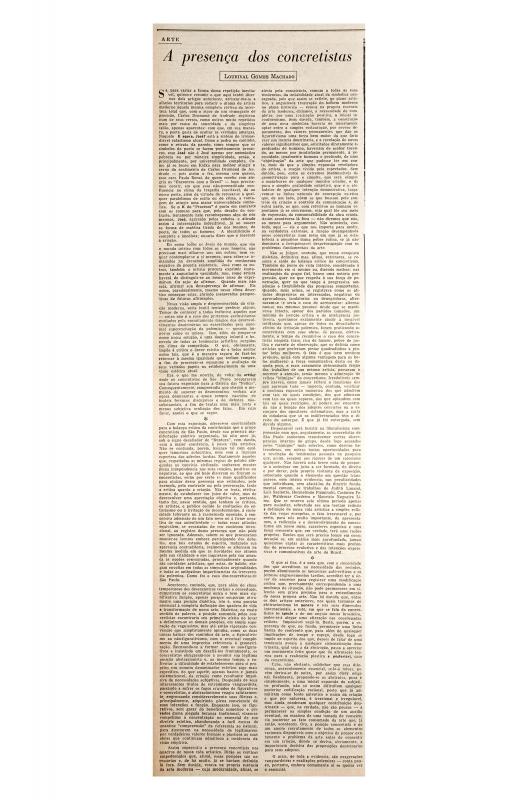This text suggests the existence, in the late fifties, of a strain of figuration that was heir to both the L’École de Paris and Expressionism. In the view of professor and journalist Lourival Gomes Machado (1917–1967), that “modern” figuration is characterized by formal concern with what is depicted. In his text “Presença dos concretistas” published in O Estado de S. Paulo (January 10, 1959), Gomes Machado discusses the importance of Brazilian Concretism to new trends in figuration (see ICAA digital archive doc. no. 1110728). In the article “Sobre nós mesmos” [About Ourselves], Gomes Machado formulates a critique of artistic institutions which, in his view, continue to operate according to “exclusivist criteria,” an observation born of the critic’s concern with ensuring space in the art milieu for all types of expression; that same concern is evident as well in his article “Ainda não é amanhã” [It’s Not Yet Tomorrow], published on December 11, 1956 (doc. no. 1110722).
In 1941, journalist, critic, and art historian Lourival Gomes Machado—along with intellectuals of the stature of Antonio Candido, Paulo Emílio Salles Gomes, and Décio de Almeida Prado—launched the São Paulo-based magazine Clima. The aim of the publication was to encourage innovation in the spheres of literary criticism, film, and theater in Brazil. During the forties, Gomes Machado was an art critic for the newspaper Folha da Manhã and the editor of the international section of O Estado de S. Paulo. After the resignation of Belgian curator Léon Degand, Gomes Machado became the director of the Museu de Arte Moderna de São Paulo (MAM/SP), a post he held from 1949 to 1951; he was also the chief curator of the first and fifth editions of the São Paulo Biennial. His most well known text is Barroco Mineiro (1969), a selection of articles on the baroque from the state of Minas Gerais, a topic that Gomes Machado began investigating in 1953 in his Teorias do Barroco.


